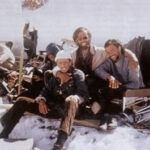Why did German soldiers wear different helmets in WWII?
Why did German soldiers wear different helmets in WWII? German soldiers wore different helmet designs in WWII as part of a progression in military equipment aimed at improving protection, functionality, and manufacturing efficiency.
Early Model:
Stahlhelm M35 – At the beginning of WWII, the German military primarily used the M35 Stahlhelm, a helmet introduced in 1935. Made from high-quality steel and featuring a complex design, the M35 provided solid protection with a comfortable liner. Its curved shape helped to deflect shrapnel and projectiles, making it a well-regarded design.
Simplified Model:
Stahlhelm M40 and M42 – As the war progressed, Germany sought ways to simplify and expedite helmet production to meet the growing demand. This led to modifications that resulted in the M40 and later the M42 versions. The M40 was similar to the M35 but had stamped ventilation holes instead of the separate grommets found in the M35, simplifying its manufacture. The M42, introduced in 1942, went further by eliminating the rolled edge along the helmet’s rim, which made production faster and cheaper. This unrolled edge also gave the M42 a distinctive, slightly more angular look.
Late-War Developments and Variants
Towards the end of the war, the German military experimented with alternative helmet designs like the M44 “Béarn” helmet, which took inspiration from Allied designs. However, these were rarely used due to limited production and Germany’s deteriorating war position.
Each helmet version aimed to balance protection with manufacturing efficiency and cost, especially as resources grew scarce later in the war.


